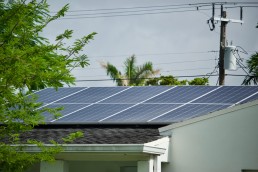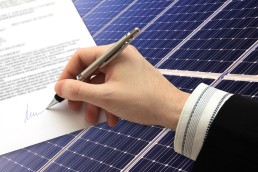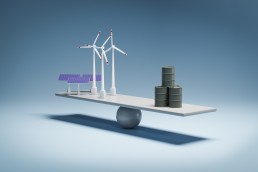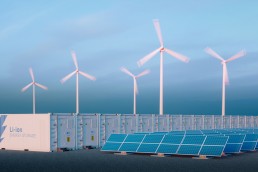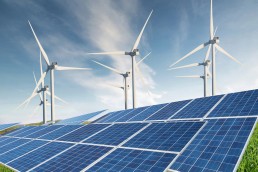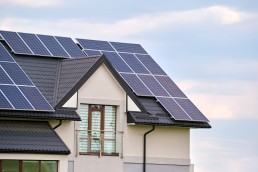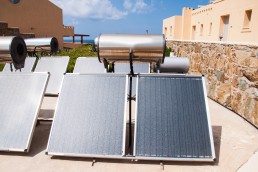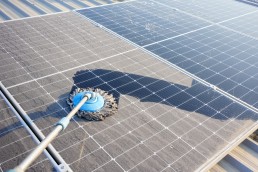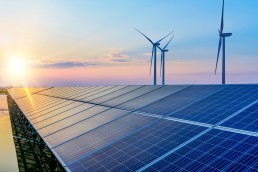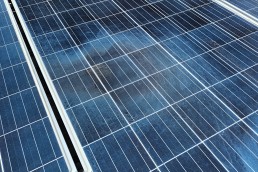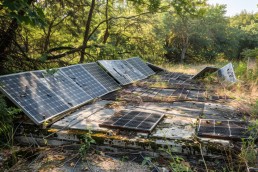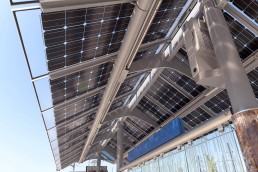Bloomberg New Energy Finance (BNEF), a strategic research provider covering global commodity markets and technologies for a low-carbon economy, has recently released a report on the global PV market for the second quarter of 2023. Below we give key takeaways from the report that accurately captures the current direction of the global solar industry.
What have we learned from the BNEF report?
The growth of global solar installations
In 2023 the solar market is expected to grow from 322 to 380GW. China will have 152 GW installed, while Europe, the USA, India, and Brazil will have 54 GW, 32 GW, 16 GW, and 15 GW, respectively.
These numbers will potentially lead to net-zero emissions by 2050 and 5.3 TW of cumulative global solar capacity by 2030. A decrease in supply chain prices also influences rapid growth with record low module prices of about 0.17-0.18 per watt.
Rooftop solar also experienced a sharp rise — almost 50% of all solar installations were on rooftops compared to 30% before 2019. The rooftop market will likely contribute significantly to capacity additions soon.
Main obstructions
Here are the main challenges of the solar market identified in the report:
– Grid connections and permissions. Queue times and grid connection costs slow down new project development. As per BNEF calculations, the world needs investments of 21.4 trillion dollars to reach net-zero targets by 2050.
– Labor and contractor shortages. Solar developers struggle to find development providers for their projects as they usually get booked way in advance by larger companies. Labor shortages also impact the rooftop solar market.
– Land constraints. Developers still find it challenging to find suitable land for their projects, especially in such land-constrained countries as The Netherlands, Japan, or South Korea. Thus, alternative methods such as floating solar, rooftop installations, agri-PV, and building-integrated projects emerge to resolve the problem and deal with the land shortage.
– Inverter shortage causing delays. Covid-caused disruptions continue to affect inverted production and delay the development of solar projects.
The positive thing is that module shortage is no longer an issue due to sufficient polysilicon production.
Fastest growing markets
Out of the top 20 solar markets, 17 are expected to grow faster in 2023 compared to 2022. All top 20 markets are anticipated to achieve a minimum growth rate of 2 GW or more. The average year-on-year (YoY) growth rate for the top 20 markets is projected to be 33%.
South Africa is expected to experience the most significant acceleration with a YoY growth rate of 260%. This growth is driven by the country’s efforts to address chronic electricity shortages through solar energy projects. Other major growth markets include Italy (78%) and the UK (69%).
Only three markets, namely South Korea, India, and Japan are expected to install solar at a slower rate in 2023. South Korea’s growth rate is projected to be 15% smaller, while India and Japan are expected to have growth rates decreased by 13% and 9%, respectively.
Apart from the top 20 markets, 31 other solar markets are predicted to add over 1 GW of new capacity in 2023. Several countries are expected to join the GW-scale club in 2023. These include Saudi Arabia, projected to install 1.4 GW (up from 0.9 GW in 2022), Qatar with 1.3 GW (up from 0.8 GW), Malaysia with 1.1 GW (up from 0.75 GW), and Belgium with 1 GW (up from 0.9 GW).
Sweden, which reached the GW scale in 2022, is expected to install 0.9 GW in 2023, down from 1 GW the previous year.
Summary
– Around 5.3 terawatt of global solar capacity is expected till 2030 in the mid-case scenario. The world can also expect to reach net-zero emissions by 2050.
– Solar value chain is experiencing decreasing prices due to expanding manufacturers’ capacities and increasing competition.
– The solar sector will grow by 36% in 2023, while global installations will likely reach between 322 and 380 GW (up from 252 GW in 2022).
– Grid connection issues, labor shortages, land constraints, and inverter shortages obstruct solar industry growth. However, the availability of modules is no longer an issue because their prices have reached record lows.
– 17 out of the top 20 global solar markets are expected to grow faster in 2023 than in 2022. The average acceleration among the top 20 global solar markets is 33%.
– Net-zero industry act has laid the foundations of local manufacturing support in the EU. However, it still offers little direct support and falls short of the US Inflation Reduction Act.
You might also be interested in:
October 10, 2024
Net energy metering: how does it work and what are the benefits?
Learn about net metering, how it works and its benefits for renewable energy users and the grid.
October 9, 2024
Solar lease vs. buy: which is better?
Explore the benefits and drawbacks of leasing or owning solar panels to determine the best option for your renewable energy needs.
October 8, 2024
Solar energy vs. fossil fuels: what’s the difference?
Want to understand the differences between solar energy and fossil fuels? Explore the pros and cons, including their environmental impacts and financial considerations.
October 7, 2024
Is solar power truly renewable or nonrenewable?
Discover whether solar energy is considered renewable or nonrenewable and explore the benefits of solar power for a sustainable future.
October 6, 2024
Understanding on-grid solar systems. Powering homes and businesses
Find out how grid-tied solar systems work, their advantages and why they're popular for homeowners and businesses looking to harness solar energy efficiently.
October 4, 2024
Solar energy vs. wind energy. Pros and cons
Discover whether solar energy is considered renewable or nonrenewable and explore the benefits of solar power for a sustainable future.
October 3, 2024
Achieving household energy independence
Discover how energy independence through solar power can benefit your household, reduce costs, and contribute to a sustainable future.
October 2, 2024
Solar powered water heaters. A comprehensive guide to their value and efficiency
Many people in rural areas have difficulty accessing financial services, a problem exacerbated by energy insecurity. Solar power can help protect rural communities from energy…
October 1, 2024
Separating solar energy facts from fiction
Explore common solar energy myths and facts. Learn the truth about the efficiency, costs, and environmental impact of solar power in this guide.
September 30, 2024
Essential solar panel maintenance for peak performance
Learn key strategies for solar panel upkeep, from regular cleaning to performance monitoring. Maximize efficiency and extend system life.
September 27, 2024
Understanding smart power grid technology
Discover how smart grids modernize power systems, enhance efficiency and integrate renewable energy sources for a sustainable future.
September 26, 2024
Why do solar panels degrade?
How and why do solar panels degrade? Explore the factors contributing to their lifespan and what measures to take to extend it.
September 25, 2024
Solar panel and battery recycling
Learn effective techniques for recycling solar panels and batteries. Discover sustainable practices, legal requirements, and the environmental impact of proper disposal methods.
September 24, 2024
Will urban air transportation become widely available?
Learn about the latest innovations and practices that can further improve the sustainability of climate-resilient crops, benefiting both farmers and the environment.
September 23, 2024
Emerging innovations in unmanned systems
Unmanned systems can perform various tasks without the hands-on operation of a human, although they’re often operated remotely. These systems are increasingly being used in…


